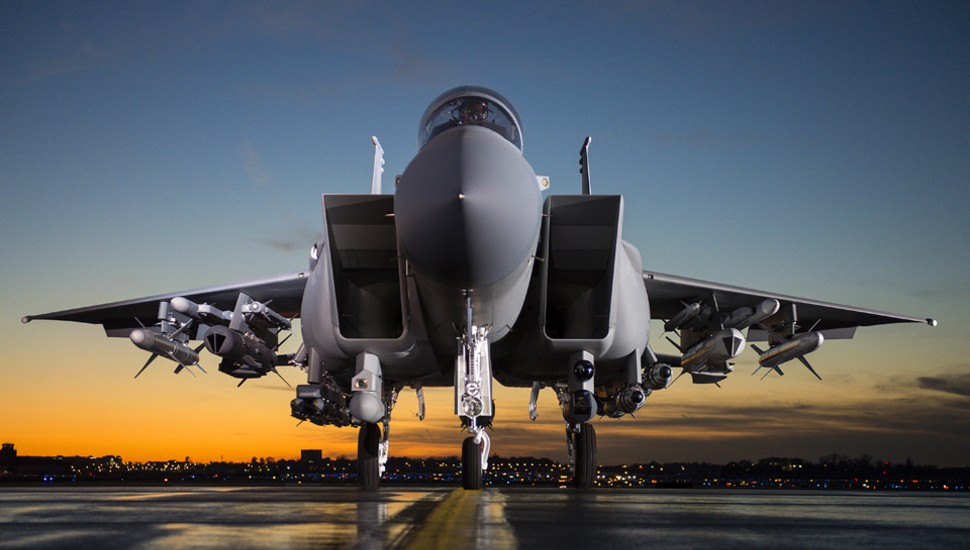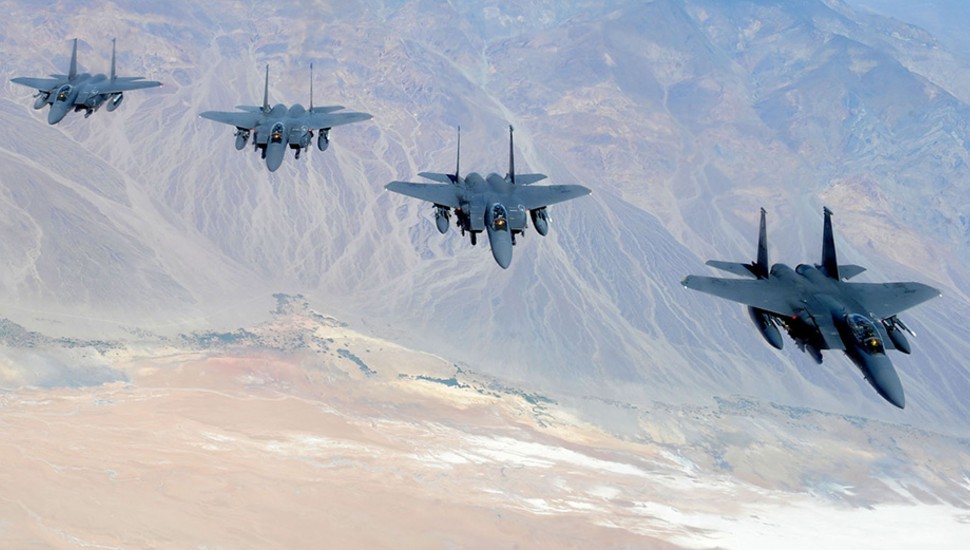The US Air Force (USAF) is requesting funds from Congress for eight Boeing F-15EX fighters instead of more of its favoured aircraft, the Lockheed Martin F-35A Lightning II stealth fighter, in a move aimed at cutting costs.
Over the past year and a half, the Office of the Secretary of Defense and the Joint Chiefs of Staff have come up with the idea as a means to quickly and cheaply replace the USAF’s ageing F-15C fleet, which will be ready for retirement in the 2020s, says a source familiar with discussions around the Pentagon's force planning.

Boeing
The new-build F-15 was not part of the service's original budget plans, but was added because the type has lower lifetime operating costs, the USAF acknowledges. The service is committed to buying 72 fighters per year, but cannot afford to purchase only F-35As because of that aircraft's high operating costs – which average about $35,000 per hour.
"Our challenge was when you look at the force structure that we have there were four fourth-[generation] airplanes – F-16, F-15E, A-10 and F-15C – that we need to fly in [the] 2030s. The F-15C is not going to make it. It is old and it is not going to fly past the mid-20s,” USAF chief of staff General David Goldfein said in testimony to the US Senate Appropriations Committee on 13 March.
"We used the best cost estimate that we had at the time and looked at the various options. The most affordable options – as long as we keep the F-35 absolutely on track with our programme of record – was to look at an F-15 variant to replace the F-15C."
As part of the Department of Defense’s fiscal year 2020 funding request, the USAF is initially requesting $1.1 billion for eight F-15EXs. The service plans to request 80 of the aircraft in total over the next five years, costing roughly $80 million each. The first F-15EXs are expected to be delivered in FY2022.
The F-15EX is a slightly modified version of the Advanced F-15, a newer variant not in the USAF inventory, which has been purchased by Qatar.
Part of the expected operating savings will come from easier transitions for pilots and maintenance personnel from the F-15C to the F-15EX.
"If you transition an F-15 to any other airplane it takes about 24 months if it’s an active duty squadron, or 36 months if it's a [National] Guard squadron, for it to be deployable again and be back to the top of its readiness," the source says. "You’ve got to send all those pilots to Luke [AFB] to train them and then the maintainers to Sheppard [AFB], or wherever your conversion schools are going to be."
The USAF estimates that the transition time from an F-15 squadron to an F-35 squadron takes roughly 18 months for an active duty squadron and 36 months for an Air National Guard squadron. It estimates that six months or less will be required to transition from the F-15C to the F-15EX.
The transition period takes aircraft out of the USAF inventory, hurting its average readiness rates, which would be contrary to former Secretary of Defense James Mattis's goal of increasing this metric to above 80%.

Boeing
In addition, as with any aircraft, when the USAF introduces the F-35A to its squadrons it has to re-equip those units with support equipment and an inventory of spare parts. The F-15 was introduced in 1976 and the USAF has already built a support structure around it.
"About 70% of the existing spare inventory already works on the [F-15EX]," says the source. “From the support equipment standpoint – so we are talking power carts [and] ladders – more than 90% of those [the USAF] already has."
The air force says it is still evaluating its spare inventory and equipment needs.
Lastly, the F-15EX is seen as a reliable launch pad for new, larger weapons, in particular hypersonic missiles that will not fit inside the F-35A's internal weapons bay, the source notes.
"We've got to carry a [7,000lb] to 8,000lb weapon that is enormous and doesn't fit in an internal bay," says the source. "And we need a very reliable platform that we well understand, that has power, space and cooling, and we can adapt quickly over the next 10, 12 or 15 years."
The USAF says hypersonic weapons are still in early stages of development, and that it is too early to know which platforms will be able to carry them.
Ultimately, Goldfein says the F-15EX cannot fully substitute for the F-35A, which he prizes for its stealth, as well as its sensor fusion: the ability to gather and distribute information to other aircraft.
"The F-15 will never be the F-35," he says. "It wasn’t designed to be."
Source: FlightGlobal.com






















